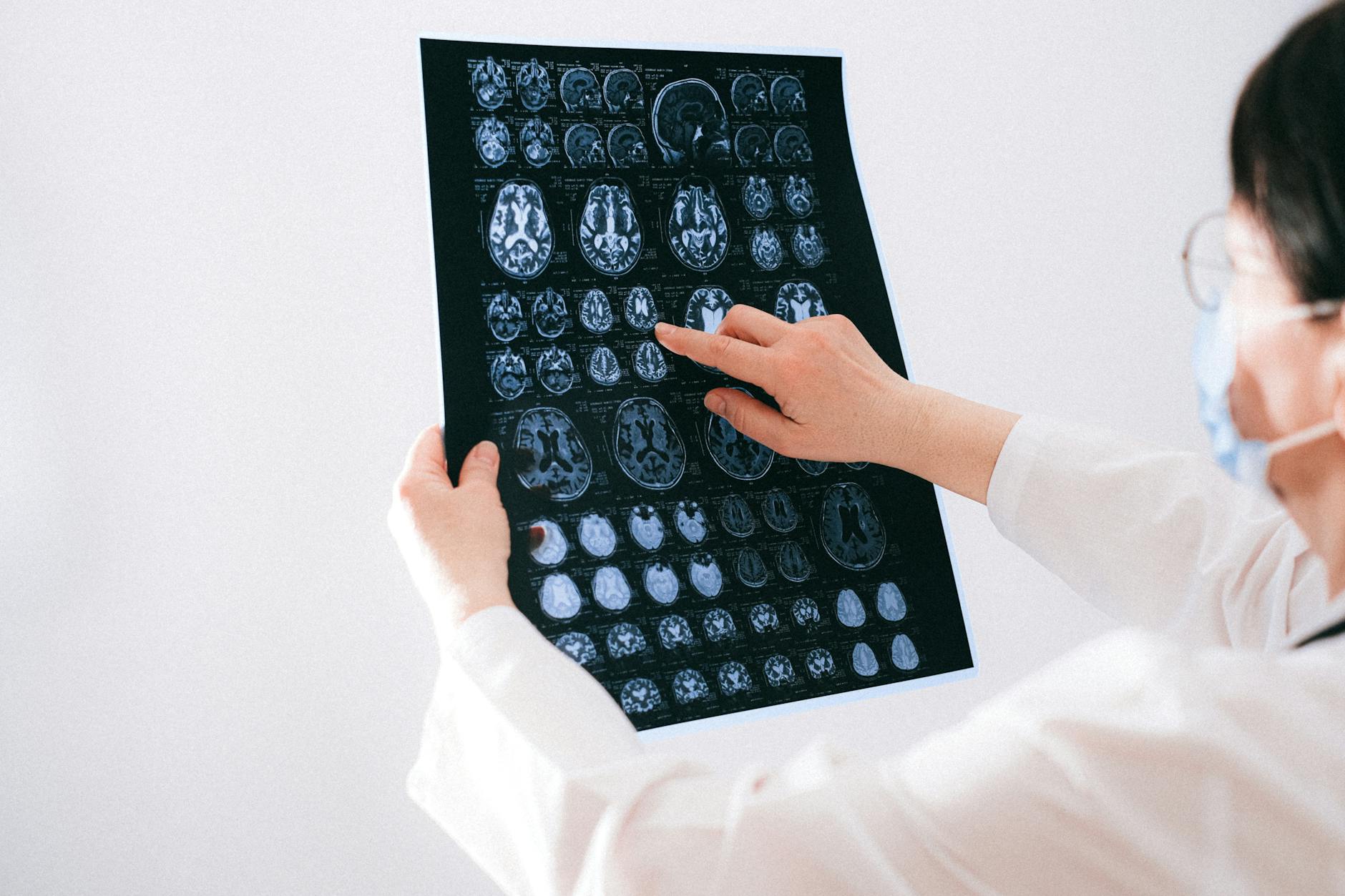Hyperthyroidism ICD 10 Code: A Comprehensive Guide for Accurate Medical Coding

Hyperthyroidism is a condition that causes the thyroid gland to produce too much thyroid hormone, leading to a range of health issues. In medical coding, accuracy is crucial, and identifying the correct ICD-10 code for hyperthyroidism ensures proper documentation and treatment planning. This guide not only highlights the ICD-10 code classifications for hyperthyroidism but also explains their relevance in clinical practice, helping medical professionals navigate these codes effectively.
What is Hyperthyroidism?
Hyperthyroidism, often referred to as an overactive thyroid, occurs when the thyroid gland produces an excessive amount of thyroid hormones. This small, butterfly-shaped gland in the neck regulates essential functions such as energy use, metabolism, and body temperature. When too much hormone is released, the body speeds up in ways it shouldn’t, leading to a range of health complications. Understanding the causes and symptoms is key to detecting and treating this condition early.
Causes of Hyperthyroidism
Hyperthyroidism can stem from several underlying conditions. Here are the most common causes:
- Graves’ Disease: This autoimmune disorder is the leading cause of hyperthyroidism. It triggers the thyroid to produce excess hormones by attacking the gland itself. Read more about Graves’ disease and its connection to hyperthyroidism here.
- Toxic Nodular Goiter: When a nodule (or multiple nodules) in the thyroid becomes overactive, it can produce hormones independent of the gland’s regulation, leading to hyperthyroidism.
- Thyroiditis: Inflammation of the thyroid gland, often caused by an infection or autoimmune conditions, can result in a temporary release of stored thyroid hormones. This can cause hyperthyroid symptoms until the gland stabilizes.
- High Iodine Levels: Consuming excessive iodine, often through supplements or medications, can overstimulate the thyroid and lead to overproduction of hormones. Discover additional details about hyperthyroidism causes here.
Each cause presents unique challenges, making it crucial to consult a healthcare provider for accurate diagnosis and tailored treatment.
Symptoms of Hyperthyroidism
The symptoms of hyperthyroidism can vary widely but generally reflect the body’s enhanced metabolism. Common symptoms include:
- Unintended Weight Loss: Despite normal or increased appetite, people with hyperthyroidism often lose weight because their metabolism is working overtime.
- Rapid Heartbeat and Palpitations: A faster-than-normal pulse rate can be alarming and is a red flag of an overactive thyroid. Explore symptoms and their medical implications at Cleveland Clinic.
- Anxiety and Nervousness: A constant sense of unease or increased irritability may occur due to heightened thyroid hormones impacting the nervous system.
- Sweating and Heat Intolerance: Many individuals feel warm or sweat excessively, even in cool environments.
- Tremors or Shaky Hands: Fine, involuntary shaking of the hands or fingers often accompanies other signs.
Other symptoms may include fatigue, frequent bowel movements, irregular menstruation, and difficulty sleeping. These diverse symptoms can sometimes mimic other conditions, complicating diagnosis. If you notice persistent signs, consulting a professional is essential.

Photo by Tima Miroshnichenko
Understanding both the root causes and the symptoms is the first step to effective management of hyperthyroidism. Early intervention can make a significant difference in the trajectory of treatment and overall health outcomes.
ICD-10 Code Overview for Hyperthyroidism
When addressing hyperthyroidism in medical coding, it’s essential to understand the ICD-10 classification system. The ICD-10 codes help ensure precision in diagnosing, treating, and documenting hyperthyroidism and its related conditions. In this section, we’ll examine the primary code for hyperthyroidism, its subcategories, and guidance for specific case coding.
Primary ICD-10 Code for Hyperthyroidism
The primary ICD-10 code for hyperthyroidism is E05, which refers to thyrotoxicosis. Hyperthyroidism and thyrotoxicosis are terms often used interchangeably though they may differ in clinical context. This overarching code encompasses any condition leading to the overproduction of thyroid hormones. Accurate use of this code is crucial for insurance claims and proper care coordination.
For an in-depth explanation of the E05 code and its classifications, refer to ICD-10 Data: E05 Overview.
Subcategories of ICD-10 Code E05
The E05 category branches into detailed subcodes, capturing variations of hyperthyroidism. These subcodes allow for detailed documentation of specific conditions that contribute to thyrotoxicosis:
- E05.0: Thyrotoxicosis with diffuse goiter
- E05.1: Thyrotoxicosis with toxic single thyroid nodule
Example: A patient with an overproductive thyroid nodule. - E05.2: Thyrotoxicosis with toxic multinodular goiter
Example: Multiple nodules in the thyroid independently producing excessive hormones. - E05.90: Thyrotoxicosis, unspecified, without thyrotoxic crisis or storm
Each subcategory provides critical insight into the root cause or manifestation of hyperthyroidism. For a detailed guide on these classifications, visit AAPC ICD-10 Code Explanation for E05.
Coding for Specific Cases
Specific cases of hyperthyroidism often require additional attention to detail. Contexts such as coexisting conditions or complications must be captured accurately:
- Thyrotoxic Crisis or Storm: Severe cases can progress to a life-threatening thyrotoxic crisis, requiring careful coding under E05.01 or E05.91, depending on the presence of a diffuse goiter or the unspecified type.
- Hyperthyroidism in Pregnancy: There are designated codes within ICD-10 to reflect thyrotoxicosis during pregnancy, which consider both maternal and fetal complications.
- Autoimmune Conditions: If resulting from Graves’ disease, ensure both the hyperthyroidism and autoimmune condition are coded.
- Transient Thyroiditis: Temporary thyrotoxic states like subacute thyroiditis should be coded under their respective ICD-10 classification, with linkage to E05 when applicable.
For more on how to handle thyrotoxicosis coding, see ICD-10 Data’s Guide to Thyrotoxicosis. Mastering the use of these codes enables clear communication among healthcare teams, a smoother billing process, and accurate reflection of patient conditions.
Importance of Accurate Coding
Accurate medical coding plays an essential role in modern healthcare, bridging the gap between clinical documentation, patient care, and financial stability. Proper use of ICD-10 codes, such as those for hyperthyroidism, ensures compliance, streamlined processes, and elevated patient care standards. Here’s why precision in coding matters, backed by real-world impacts and risks.
Impact on Patient Care
Accurate coding directly influences patient care and healthcare management. Why does this matter? Consider that coding is the language used to translate detailed clinical interactions into actionable data.
- Better Diagnosis and Treatment Plans: When the right ICD-10 code is used, like E05 for hyperthyroidism, healthcare providers can focus on specific treatment paths. Coding errors may lead to delays in care or misdiagnosis.
- Efficient Communication Among Providers: Medical teams rely on coding data to communicate a patient’s history, test results, and progress. Missteps in coding create confusion and disrupt this vital flow of information.
- Improved Monitoring of Chronic Conditions: Codes allow for tracking chronic conditions like hyperthyroidism across populations. This data informs healthcare resource allocation and preventive measures for high-risk groups.
For more on how coding strengthens patient care, refer to Importance of Coding Accuracy.

Photo by Tima Miroshnichenko
Legal and Financial Implications
Incorrect coding doesn’t just impact care—it has significant legal and financial consequences that can be devastating for organizations and patients alike.
- Legal Risks: Errors in medical coding, such as coding hyperthyroidism unintentionally under a different category or as a fraudulent misrepresentation, may result in audits or legal investigations. Coding violations can breach the Federal Civil False Claims Act, leading to steep fines or even imprisonment. Learn about coding consequences from Neolytix.
- Revenue Loss: Payers rely on accurate coding for reimbursements. Mistakes may cause denied claims or underpayments, which directly affect the financial health of a practice. As an example, this article explains that cumulative coding errors could drastically lower revenue.
- Operational Strain: Once errors enter a claim, the time required to correct these mistakes drains administrative resources. Rejected payments snowball into reduced operational efficiency and staff burnout.
In essence, getting the coding correct the first time isn’t just ideal; it’s mandatory for a well-functioning healthcare system. To dive deeper into common pitfalls and how to avoid them, see The Impact of Coding Errors on Medical Billing.
By focusing on accuracy, medical professionals can ensure smooth billing, legal compliance, and, most critically, better health outcomes for patients.
Key Takeaways
Understanding hyperthyroidism ICD-10 codes is critical for healthcare providers, coders, and administrators. These codes ensure accurate representation of the condition, enabling effective patient care, streamlined communication, and seamless insurance processes. Below are the most important takeaways that can help navigate the nuances of hyperthyroidism coding:
The Role of ICD-10 Code E05
The core ICD-10 code for hyperthyroidism is E05, which stands for “thyrotoxicosis.” This versatile code covers a range of thyroid hormone overproduction scenarios, ensuring that cases of hyperthyroidism are correctly documented and reimbursed. You can explore the detailed classifications under E05 in this ICD-10 Data guide.
Detailed Subcategories Enhance Precision
ICD-10 coding for hyperthyroidism becomes more specific through subcategories:
- E05.0: Thyrotoxicosis with diffuse goiter.
- E05.1: Thyrotoxicosis with a single toxic thyroid nodule.
- E05.2: Thyrotoxicosis caused by toxic multinodular goiter.
These clear distinctions allow for precise documentation and a better understanding of the root causes. For further insight into these subcategories, visit AAPC’s E05.91 Overview.
Implications for Patient Care
Accurate ICD-10 coding is not just administrative—it lays the groundwork for comprehensive treatment plans and coordinated care. Coding errors can result in delays, miscommunication, or even misdiagnosis. Proper implementation of codes like E05 means patient symptoms and their causes are understood and addressed appropriately. Check out why coding accuracy matters for more details.
Special Considerations in Coding
Special cases, such as hyperthyroidism during pregnancy or a thyrotoxic storm, require additional codes for clarity. For example, E05.91 denotes thyrotoxicosis with a thyrotoxic crisis. These subcodes not only enhance medical records but also ensure compliance with insurance requirements. A deeper dive into thyrotoxicosis coding nuances can be found here.
Legal and Financial Stakes
Incorrect coding has significant ripple effects on healthcare operations:
- Legal Issues: Missteps can lead to audits or penalties under laws like the False Claims Act.
- Financial Impact: Revenue loss from denied claims and rejected payments due to coding errors can accumulate rapidly. For a closer look, see how coding errors influence revenue cycle management.
Each of these points reinforces why accuracy in hyperthyroidism ICD-10 coding is non-negotiable. When done right, it bridges the gap between clinical documentation and high-quality patient care.
Conclusion
This section ties together the critical aspects of hyperthyroidism ICD-10 coding, emphasizing how these codes are not just administrative tools but integral to accurate documentation, treatment, and communication among healthcare providers.
Hyperthyroidism-related codes, primarily classified under E05, are pivotal in detailing thyroid overactivity conditions for patient records. They span from general thyrotoxicosis diagnoses to specific complications like thyrotoxic crises. Utilizing these codes correctly ensures more than billing accuracy—it safeguards patient care.
Beyond the medical setting, ICD-10 codes like those for hyperthyroidism contribute to broader perspectives on global health trends. For example, tracking these codes can highlight increases in hyperthyroidism incidence, assist in allocating health resources, or support research leading to innovative treatments.
To explore the specifics of these codes and their subtle nuances, refer to trusted resources like the official ICD-10 Data guide for hyperthyroidism. This not only builds confidence for healthcare professionals but also reinforces trust in the healthcare process for patients themselves.
By systematically incorporating these codes into practice, institutions achieve smoother processes, better financial health, and, most importantly, optimal patient outcomes—one accurate diagnosis at a time.

Photo by Anna Shvets

